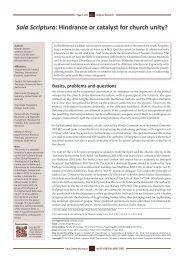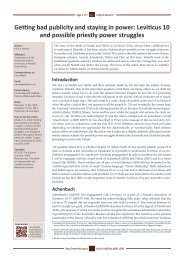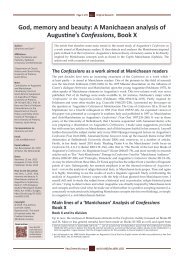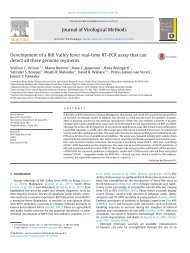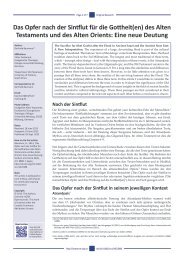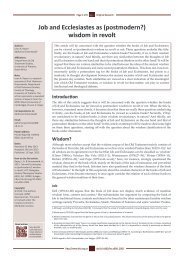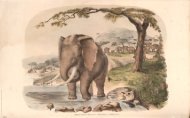View/Open - University of Pretoria
View/Open - University of Pretoria
View/Open - University of Pretoria
You also want an ePaper? Increase the reach of your titles
YUMPU automatically turns print PDFs into web optimized ePapers that Google loves.
VAN ZYL ET AL.: ARCHAEOFAUNA FROM XARO ON THE OKAVANGO DELTA 53<br />
Fig. 4<br />
Excavation plan <strong>of</strong> Xaro 2.<br />
a metal gate cut across the peninsula approximately<br />
500 m from the Lodge. A datum point was<br />
established 2 m metres west and 10 m south <strong>of</strong> the<br />
gate, and a series <strong>of</strong> test squares was excavated at<br />
20 m intervals (Fig. 4). A west–east series <strong>of</strong> test<br />
squares was also excavated along a line established<br />
at 00.39 s. A final test square was placed<br />
north <strong>of</strong> the fence along the west side <strong>of</strong> the track.<br />
In all <strong>of</strong> the units south <strong>of</strong> the gate the top 30 cm <strong>of</strong><br />
deposit were composed <strong>of</strong> very loose, uncompacted,<br />
grey sand. Below 30 cm, the soil was<br />
damper and more compact. While no natural stratigraphy<br />
was observed, the artefact distributions<br />
indicate there are two artefact horizons at the site,<br />
the first occurring between 10 and 20 cm below<br />
surface, where artefacts similar to the upper component<br />
at Xaro 1 were recovered. A fragment <strong>of</strong> a<br />
locally made tobacco pipe was associated with<br />
these remains and suggests a 19th century date.<br />
The second horizon begins 50 cm below surface,<br />
where an increase in the number <strong>of</strong> ceramics, all<br />
charcoal-tempered, was found. The few decorated<br />
vessels recovered were stylistically similar to those<br />
recovered from the lower, earlier component at<br />
Xaro 1, and at Divuyu. In the 01e.60s unit, five chert<br />
flakes, one chert core, and one fragment <strong>of</strong><br />
micaceous quartzite or schist were recovered from<br />
30–80 cm below surface, along with charcoaltempered<br />
ceramics. One iron bead and two interconnected<br />
links <strong>of</strong> iron chain were recovered<br />
between 70 and 90 cm below surface in association<br />
with the Divuyu-style ceramics. A single calibrated<br />
date <strong>of</strong> AD 1180–1390 (Tx-7436) was received for<br />
scattered charcoal fragments collected between 90<br />
and 100 cm below surface in squares 38–39s, 1–5e.<br />
This date appears to be contaminated and should<br />
not be considered an accurate date for the lower,<br />
Divuyu component.<br />
METHODOLOGY<br />
The faunal samples from Xaro 1 and 2 were<br />
analysed separately per square and layer, and combined<br />
for this paper because the samples were too<br />
small to reach meaningful conclusions if considered<br />
per individual square and layer. The samples<br />
were analysed at the Ditsong National Museum <strong>of</strong><br />
Natural History (formerly Transvaal Museum)<br />
in <strong>Pretoria</strong>. The analytical method used is that



